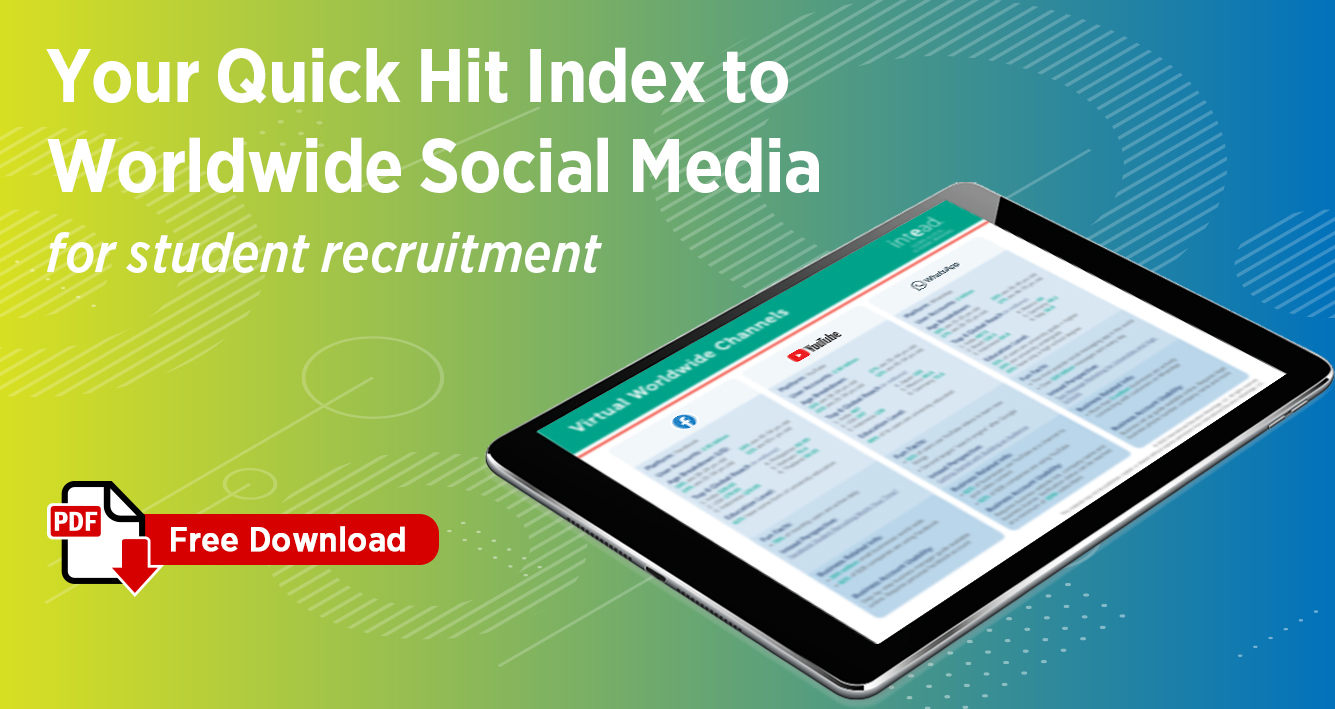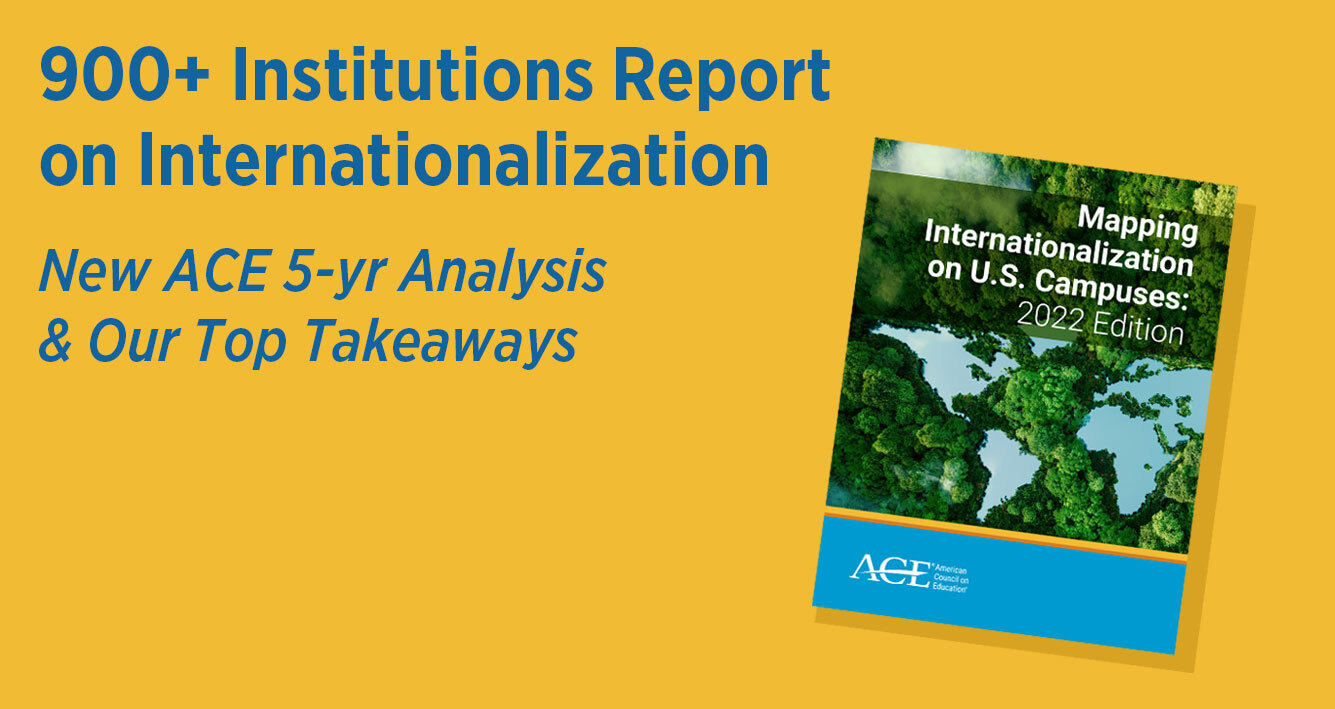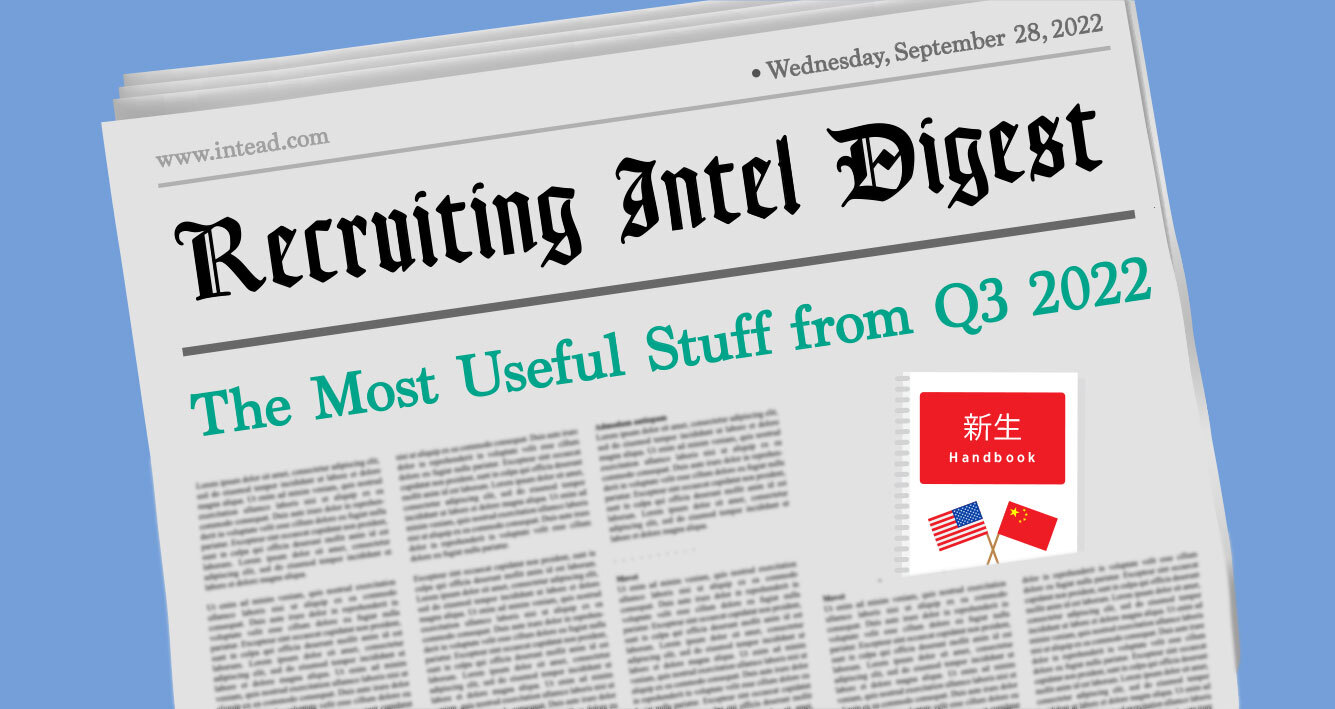If social media isn’t part of your student recruitment strategy, then, uhm, we need to talk.
[crickets]
Ok, good! Because of course social media is part of your strategy. Now, knowing which platform(s) makes the most sense and how much to invest for which audience segment in which part of the world, that’s just a bit trickier. We’ll give you that.
A useful tool for you would be a list of the major global social channels with key user stats and other perspectives to help you scan the options and focus quickly on what matters. Funny you should ask for that…
The Intead team (with special tip of the hat to our international student interns) offer you the next in our Intead Index series: Virtual Worldwide Channels Cheat Sheet.
You’ll definitely want to download this one right now to support your team as you develop your international social media marketing plans. In a week, we will restrict access to this download to only our Intead Plus members.
Our Worldwide Social Media index provides a high-level view of the 15 most popular social media channels that boast the clearest paths for organic and paid marketing (sorry BeReal, maybe you’ll be marketing-ready for our next index).
Just about your LAST CHANCE to Come with Questions and Leave with a Plan.
If you are attending the AIRC or ICEF Conferences - here is a huge plus opportunity.
The Intead/San Diego State University One-Day Workshop on December 13th, 2022 will be a hands-on opportunity to learn from an awe-inspiring international student recruitment faculty.
- A full day of international student recruitment strategy and execution discussion
- Two luminary keynotes
- Luncheon on Social Justice with Dr. Jewell Winn and Dr. Adrienne Fusek
- Dinner on Chinese Student Influencers with Dr. Yingyi Ma and Brad Farnsworth
- At $350 for the day (inclusive of all meals), this learning opportunity is a steal.
Join Intead Plus and your team can access this newest index and all our other Intead Index student recruitment essentials any time the need arises. Helpful as training and reference materials for your enrollment and recruiting team.
Ready to download your free copy of our Virtual Worldwide Channels index? Read on…
Read More








.jpg)
.jpg)
